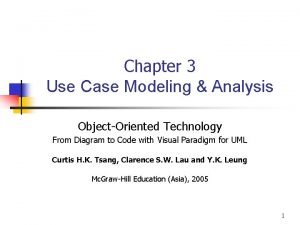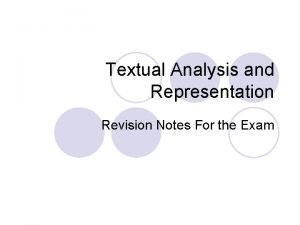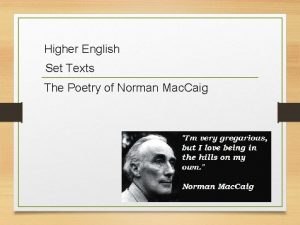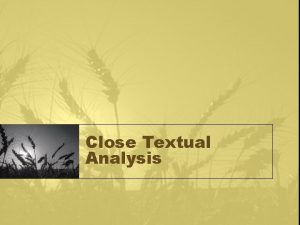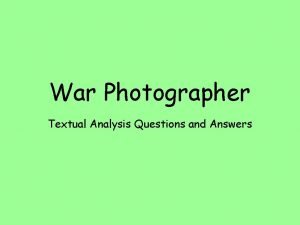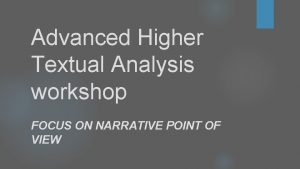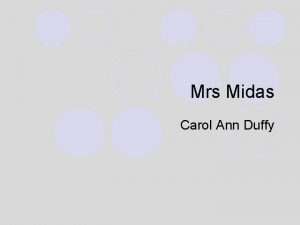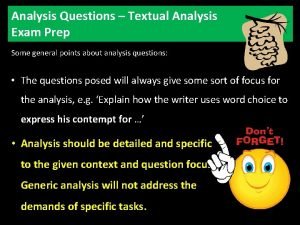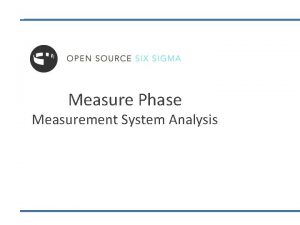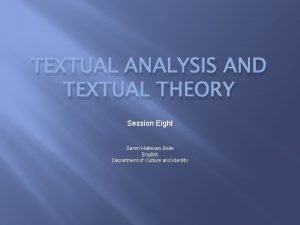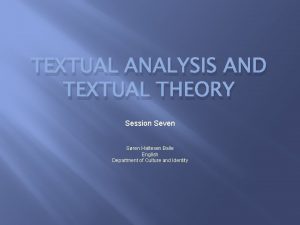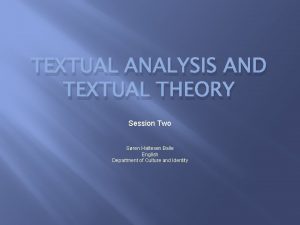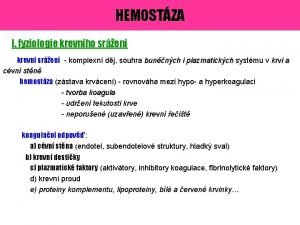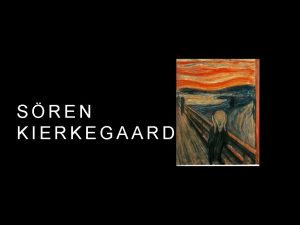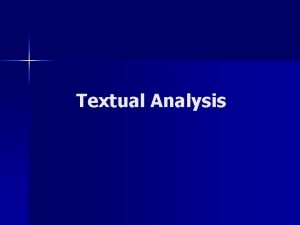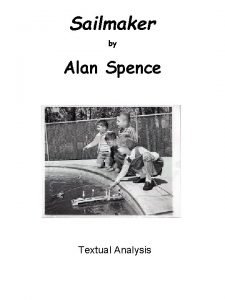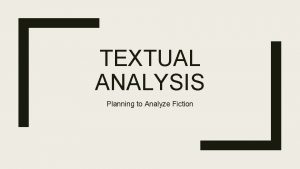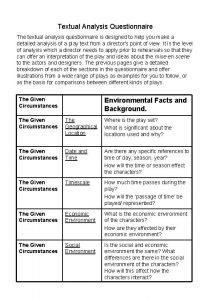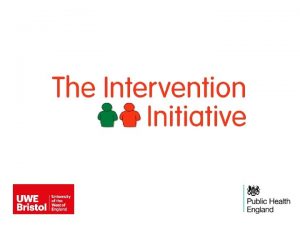TEXTUAL ANALYSIS AND TEXTUAL THEORY Session Six Sren














- Slides: 14

TEXTUAL ANALYSIS AND TEXTUAL THEORY Session Six Søren Hattesen Balle English Department of Culture and Identity

Agenda � � � Introduction: the summary assignment for today and next time Introduction: today’s session Presentation: � cultural studies, postcolonialism � magic realism � Class room discussion: � Salman Rushdie, ”The Prophet’s Hair” (1981) � thematic functions of postcolonial and magic realist elements in Rushdie’s story

Narrative: literary studies vs. cultural studies � � the literary text vs. the cultural text high literature vs. products of popular culture, mass culture, media culture, consumer culture, minority culture autonomous aesthtic whole vs. ’signifying practices’ (of modern culture): meaning, identity, representation, and agency complexity, beauty, insight, universality, value vs. the functioning of cultural productions/the construction of cultural identities

Narrative: literary into cultural studies � � � the literary text studied as a cultural ’signifying practice’ (just like any other cultural object) the literary text expresses or represents culture vs. the literary text creates or constructs culture is the source or cause of literary representations (foreground < background) vs. culture is the effect of literary representations (foreground > background) the literary text has an ideological or politcal funtion the literary text as oppressive or subversive (of oppressive cultural forms)? the relevance for postcolonial literatures: English language and literature as expressions of colonialism

Narrative: the postcolonial situation � � � Former colonies are independent and free of colonial rule (postcolonial) However, former colonies remain dependent politically, economically, socially, ideologically, linguistically, aesthetically, etc. (neo-colonial) Thus, former colonies are hybrids, mongrels, and in-betweens (post-colonial)

Narrative: coping with the postcolonial situation Ngugi vs John Agard and Rushdie � � � Ngugi Return to ’harmony’ by transcending colonial alienation and embracing your original culture and language (Gikuyu) ”Language carries culture …(2538)

Narrative: coping with the postcolonial situation Ngugi vs John Agard and Rushdie � John Agard: embracing the languages of the colonised (West Indian Creole, British Guiana) and the coloniser (the Queen’s English). Writing broken English is an attempt at breaking English linguistically, aesthetically, politically, etc…)

Narrative: coping with the postcolonial situation Ngugi vs John Agard and Rushdie � John Agard, ”Listen Mr Oxford don” (1985) http: //www. youtube. com/watch? v=Ywy-Tthdg 7 w

Narrative: Coping with the postcolonial situation Ngugi vs John Agard and Rushdie � Rushdie: Embracing English as a global language (”The English language ceased to be the sole possession of the English some time ago”(2541)), but chutnifying it, spicing it up according to how it is used.

Narrative: Salman Rushdie and ideas of multiplicity, pluralism, and hybridity � ‘My’ India has always been based on ideas of multiplicity, pluralism, hybridity: ideas to which the ideologies of the communalists are diametrically opposed. To my mind the defining image of India is the crowd, and a crowd is by its very nature superabundant, heterogeneous, many things at once. (2852)

Narrative: Ethnic, cultural, ideological, political linguistic, aesthetic variety, diversity, and difference � � Multiplicity vs. uniformity Pluralism vs. essentialism, nationalism Hybridity vs. purity Heterogeneity vs. homogeneity

Jean Rhys, ”The Day They Burned the Books” � � � Creole identity A story about colonialism Images of colonialism

Narrative: magic realism � ”These writers interweave, in an ever-shifting pattern, a sharply etched realism in representing ordinary events and descriptive details together with fantastic and dreamlike elements, as well as materials derived from myth and fairy tales” (Abrams)

Salman Rushdie, ”The Prophet’s Hair” (1981) � � � Is "The Prophet's Hair" a work of magic realism or postcolonialism or both? Elements of realism, of magic? Why and how are they used? Elements of postcolonialism: multiplicity, pluralism, hybridity. Why and how are they used?
 Sren kierkegaard
Sren kierkegaard A polygon with six congruent sides and six congruent angles
A polygon with six congruent sides and six congruent angles Identifying actors and use cases using textual analysis
Identifying actors and use cases using textual analysis Textual analysis
Textual analysis Basking shark higher english
Basking shark higher english Close textual analysis example
Close textual analysis example War photographer questions and answers
War photographer questions and answers Higher textual analysis
Higher textual analysis Mrs midas analysis
Mrs midas analysis Textual analysis questions
Textual analysis questions Attribute repeatability and reproducibility
Attribute repeatability and reproducibility Six steps of business transaction analysis
Six steps of business transaction analysis The six step blueprint for process analysis begins with:
The six step blueprint for process analysis begins with: Six sigma at academic medical hospital case analysis
Six sigma at academic medical hospital case analysis Trait approaches to leadership
Trait approaches to leadership


